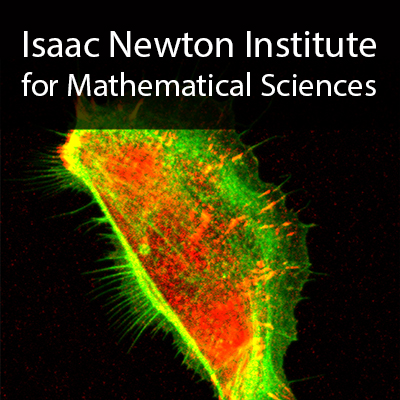Mechanical signals and morphogenesis in plants
51 mins 2 secs,
282.02 MB,
WebM
640x360,
29.97 fps,
44100 Hz,
754.49 kbits/sec
Share this media item:
Embed this media item:
Embed this media item:
About this item

| Description: |
Bozorg, B (Lund University)
Wednesday 16th September 2015 - 16:15 to 17:00 |
|---|
| Created: | 2015-09-29 15:02 |
|---|---|
| Collection: | Coupling Geometric PDEs with Physics for Cell Morphology, Motility and Pattern Formation |
| Publisher: | Isaac Newton Institute |
| Copyright: | Bozorg, B |
| Language: | eng (English) |
| Distribution: |
World
|
| Explicit content: | No |
| Aspect Ratio: | 16:9 |
| Screencast: | No |
| Bumper: | UCS Default |
| Trailer: | UCS Default |
| Abstract: | Plants undergo large deformations during organ initiation and growth. Recent evidence is revealing the role of mechanical cues in these morphogenic events. Here we summarise our efforts to include properties such as varying elasticity, plasticity and mechanical anisotropy in time and space for modelling the plant tissue. Due to the key role of plant epidermis in morphogenesis, the plant tissue can be modelled as a pressure vessel. We modified the well known Saint-Venant's strain energy model to represent anisotropic material. In our model the tuneable material anisotropy resembles fiber deposition in primary plant walls. In the meristem periphery circumferential cellulose fiber organisation is the main controller of longitudinal growth. In our model this can be achieved by applying a feedback from maximal stress direction to the fiber orientation. By considering the degree of material anisotropy and anisotropy direction as additional variables in a linear material model u nder plane stress condition, we could show that stress feedback model is in fact an energy minimization process. Though this finding is not sufficient to describe the underlying mechanism of potential stress feedback, it could be considered as an evolutionary motivation. We employed strain signal for regulating the differential plastic deformation. We showed that the behaviour of such model is mesh independent and in case of being used together with stress feedback model for anisotropic tissue can result in overall deformations favourable for development of plant-like shapes. Ignoring the internal structure in tissue pressure models is not realistic in various cases. Some patterning processes such as vein formation in meristem need to be investigated throughout the three dimensional structure of the tissue. We have also extended our model to study the capability of mechanical signals regulating the cell polarity which are crucial to Auxin patterning processes including the internal tissue structure. |
|---|---|
Available Formats
| Format | Quality | Bitrate | Size | |||
|---|---|---|---|---|---|---|
| MPEG-4 Video | 640x360 | 1.93 Mbits/sec | 741.08 MB | View | Download | |
| WebM * | 640x360 | 754.49 kbits/sec | 282.02 MB | View | Download | |
| iPod Video | 480x270 | 522.08 kbits/sec | 195.08 MB | View | Download | |
| MP3 | 44100 Hz | 249.77 kbits/sec | 93.42 MB | Listen | Download | |
| Auto | (Allows browser to choose a format it supports) | |||||

